These 5 Italian beauties hide Corvette bones
Corvette history is littered with fascinating one-off design experiments. Some, like the ’59 Stingray Racer, have remained etched into our collective memory. But many more faded into oblivion the moment the auto show’s lights switched off—very much the case for the Vettes penned by Italy’s most renowned design firms.
Pininfarina Rondine (1963)

Perhaps the best known of these so-called Italian Corvettes, the Pininfarina Rondine was a running prototype first presented at the 1963 Paris Motor Show.
Equipped with a 327 small-block V-8 and a four-speed manual transmission, the Rondine was built on the chassis of a brand-new 1963 Sting Ray (VIN number 99574) directly supplied to Pininfarina by GM. The idea behind the study, commissioned by Chevrolet itself, was to see an Italian take on the Corvette. But little did GM know that once the Vette arrived at Pininfarina’s workshop, the designer tasked with creating a new body for it was Detroit native Tom Tjaarda.
Whether Tjaarda’s elegant, smooth lines were an improvement over the iconic Sting Ray we know and love largely depends on individual taste. Still, GM’s top brass was reportedly satisfied with the exercise, including design supremo Bill Mitchell and Corvette’s chief engineer Zora Arkus-Duntov. Nonetheless, Pininfarina’s hopes for a production version were soon quashed, so the Rondine remained a one-off. The Turinese firm kept the Rondine in its company museum until financial difficulties forced it to put it on sale at Barrett-Jackson’s 2008 Scottsdale auction, where it fetched $1.6 million.
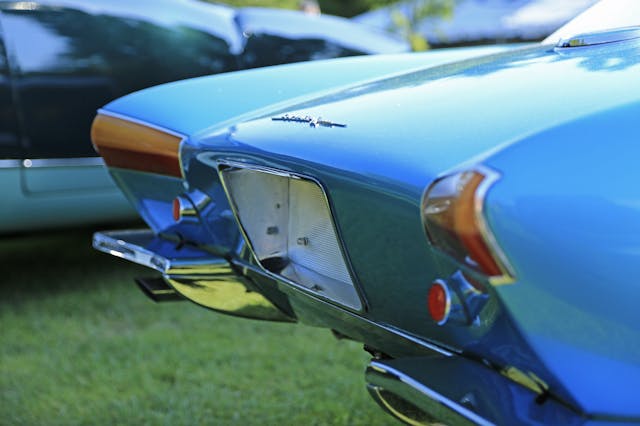
The name “Rondine” is the Italian for “swallow” and was inspired by the car’s peculiar rear-end design, vaguely reminiscent of the bird’s tail. But if GM did nothing with the Rondine, the visionaries at Pininfarina were never the ones to let a good idea go to waste. When Fiat came knocking at Pininfarina’s door for a spider derivative of the upcoming 124, Tjaarda skillfully adapted the Rondine’s design theme to Fiat’s small roadster, which went on to become a beloved Italian classic.
Bertone Ramarro (1984)

Presented at the 1984 Auto Expo in Los Angeles, the Ramarro (a little green lizard common in the Piedmontese countryside) was Bertone’s radical take on the recently launched C4 Corvette.
In fact, the donor car was the Vette from Chevrolet’s 1983 Geneva Motor Show stand, which GM gifted to Bertone after the show ended. Bertone’s designers knew that trying to improve upon the new Corvette’s very accomplished design would have been pointless. But they also knew that if their Corvette couldn’t be better than Chevrolet’s original, then it ought to be bolder. A lot bolder.
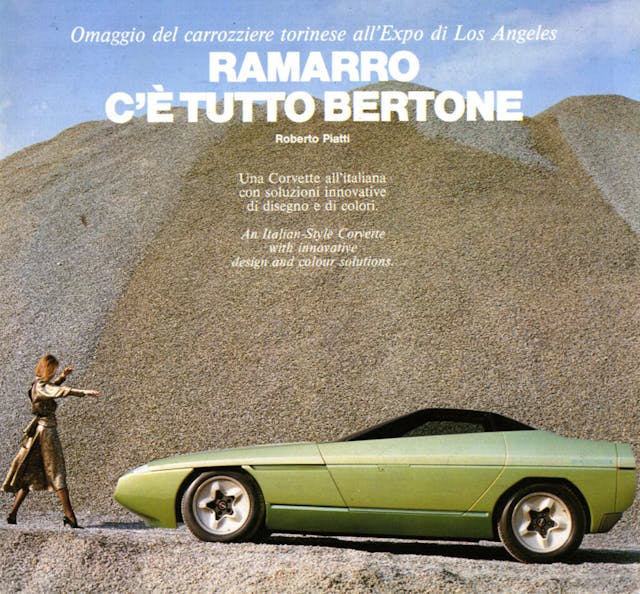
Created under the direction of Marc Deschamps, the Ramarro was an almost brutal wedge design. The sharply cut-off rear end was ten inches shorter than the donor ‘Vette and housed the engine and air-con radiators. That’s because their space at the front of the car was taken by the space-saver spare wheel to further lower the car’s nose compared to the original.
The C4 Corvette’s generous glasshouse was substituted by what looked like a jet fighter’s canopy: the entire roof was dark, with the pillars disguised by the smoked glass. Access to the cabin was via two large sliding doors, which revealed a cabin upholstered in leather whose color and texture were meant to evoke the lizard’s skin.
The Ramarro was a fully functional, running vehicle. However, once its motor show run was over, it mostly sat in Bertone’s museum until the firm’s bankruptcy in 2014. The whole collection was bought at auction by the Automotoclub Storico Italiano in 2015, and the Ramarro has since appeared in many events and exhibitions. But as Richard Corliss once wrote, nothing ages as quickly as yesterday’s visions of the future: The Ramarro has lost none of its shock factor, but it’s become more of a charming period piece than a design classic.
Bertone Nivola (1990)
Named after the legendary Italian racing driver Tazio Nuvolari, the Bertone Nivola appears on this list out of sheer completism more than anything else. That’s because it’s a “Corvette-engined” design study rather than a “Corvette-based” one.
The quad-cam LT5 V-8 from the Corvette ZR-1 was placed amidship in a tubular steel frame, mated to the ZF transaxle from the De Tomaso Pantera. But citing the Nivola as one of the many mid-engined Corvette concepts that paved the way for the current C8 generation would be a stretch. That’s because GM’s involvement with the project was limited to the engine supply, and the Nivola wore no Chevrolet or Corvette badges.
ItalDesign Moray (2003)

Presented at the 2003 Geneva Motor Show, the Moray was Giorgetto Giugiaro’s way to commemorate the Corvette’s 50th anniversary. That’s why, rather than an attempt to reinvent the Corvette, Giugiaro’s Moray was more of a loving tribute to the classic Vettes of yore.
Built as a fully functional prototype on a Corvette C5 chassis, the Moray’s sensuous curves harked back to the C3 generation and legendary show cars like the Manta Ray. Rather than a traditional roof, the Moray had two large removable glass canopies hinged on a central “spine” that can be read as a clever homage to the ’63 “split-window” Corvette. But my favorite part of the design is the front end, with its ultra-slim headlights positioned on the outer edges of the bodywork. This way, Giugiaro recreated the “eyeless” look of previous Corvette generations while doing away with the classic pop-up lights.
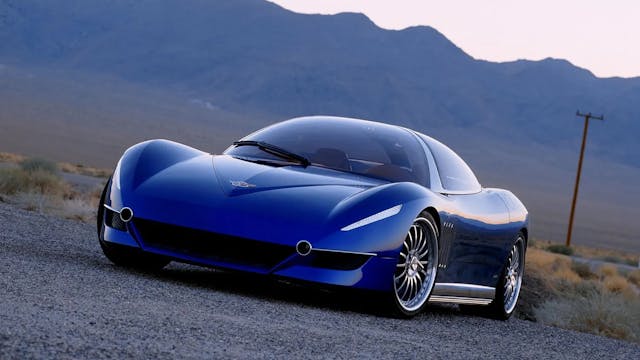
The name Moray (the English name for the eel-type fish Muraena Helena) was in itself another nod to the Corvettes from the Bill Mitchell era, whose shapes were famously inspired by marine creatures.
Bertone Mantide (2009)
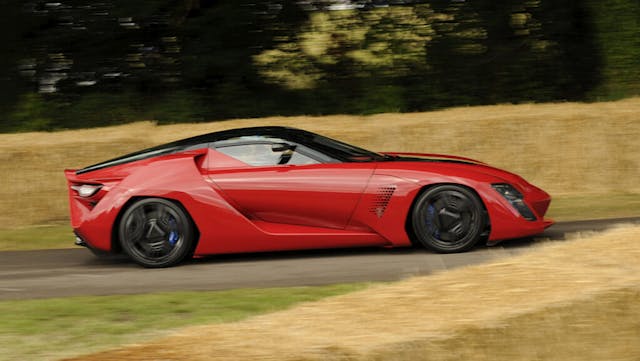
Presented in 2009, the Mantide (the Italian word for mantis) was a one-off penned under the direction of Jason Castriota during Bertone’s twilight years.
Commissioned by a private collector, the Mantide was built on the chassis and running gear of the C6-generation Corvette ZR1. Thanks to the ample use of carbon fiber, Bertone claimed a 250 pounds weight saving over the donor Vette. On top of that, The Mantide’s somewhat contrived body design produced, according to Bertone, 25 percent less drag than the Corvette despite a 30 percent increase in downforce.
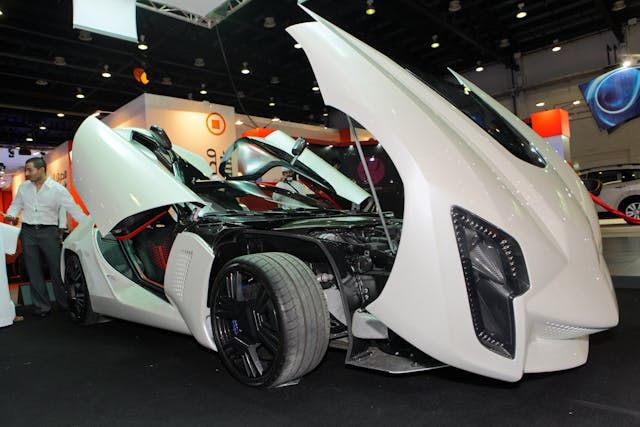
The Mantide was initially presented in red but later repainted in pearlescent white, which led some to speculate about a limited production run that never actually happened. What still wears the original red is the full-size styling model for the Mantide, which remained part of Bertone’s collection.
Much to the credit of GM’s designers, not even Italy’s greatest stylists ever managed to create a Corvette that looked better than the regular production models. But still, if you had to pick one, which of these Italian Vettes would you have liked to see in production? Drop a comment below.
***
Check out the Hagerty Media homepage so you don’t miss a single story, or better yet, bookmark it. To get our best stories delivered right to your inbox, subscribe to our newsletters.
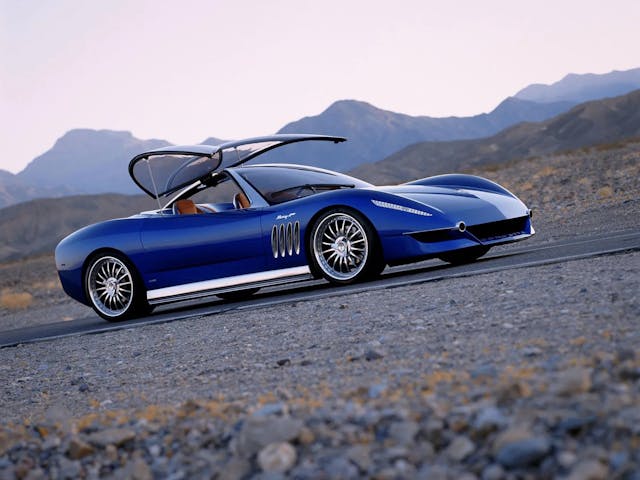
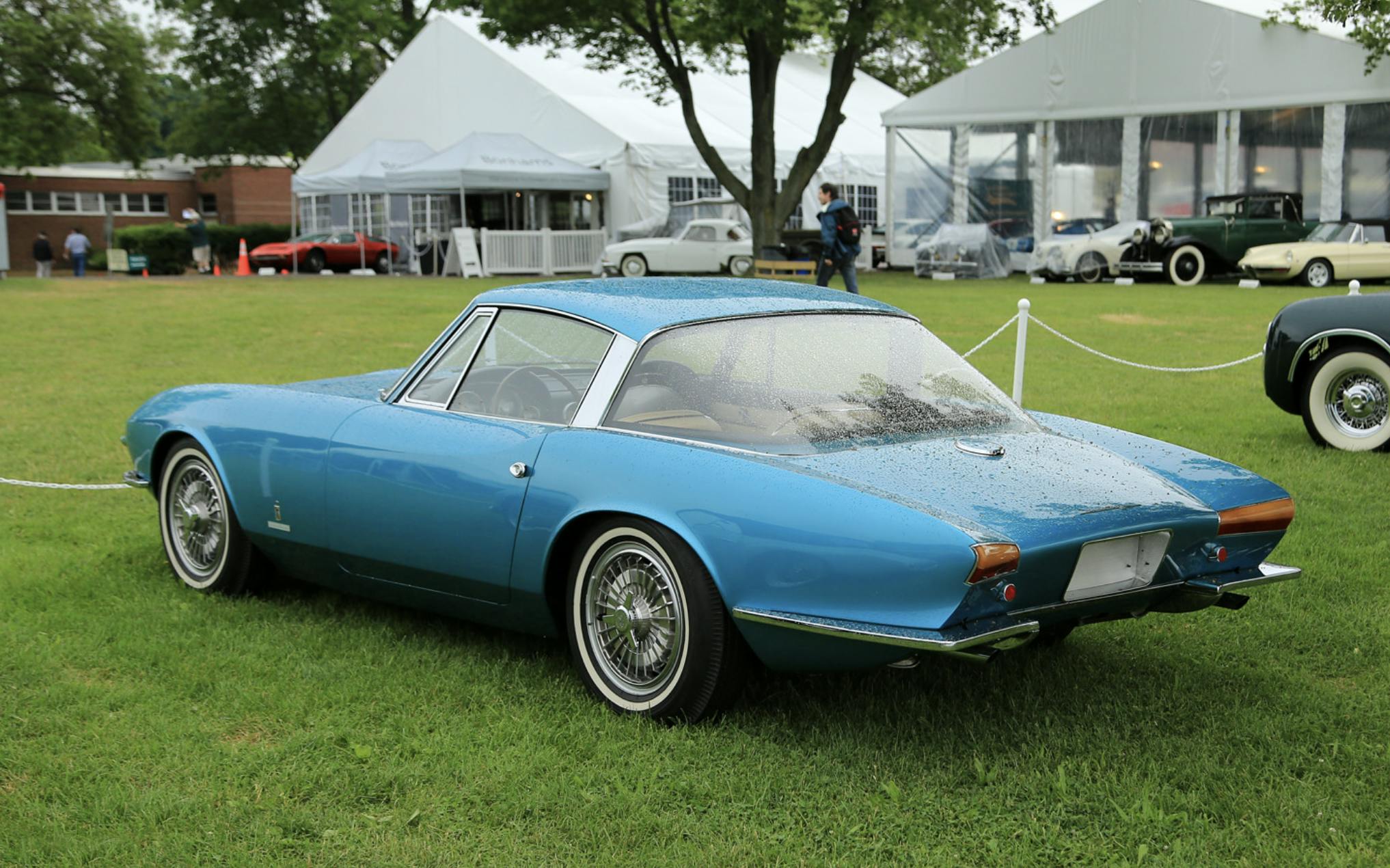
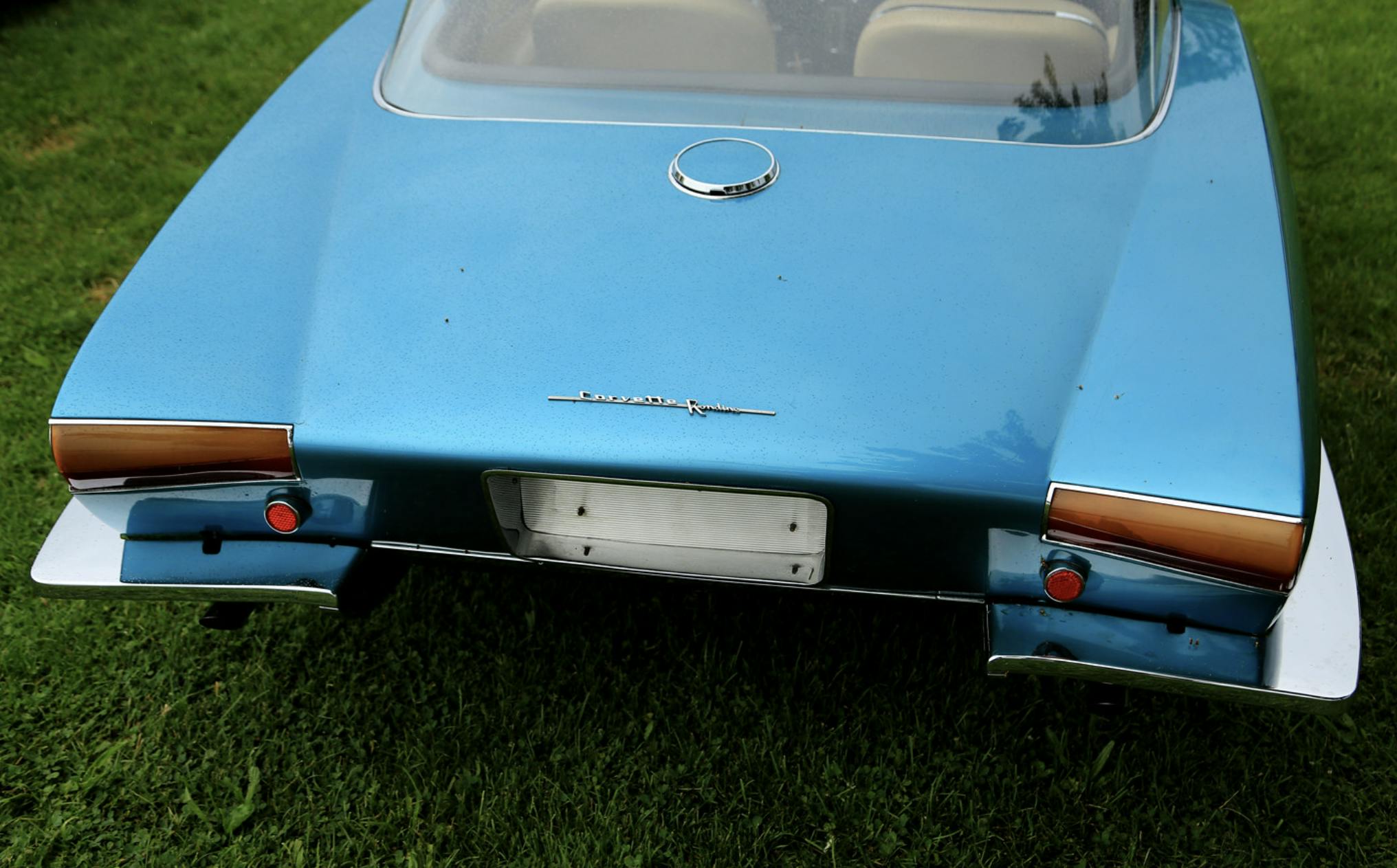

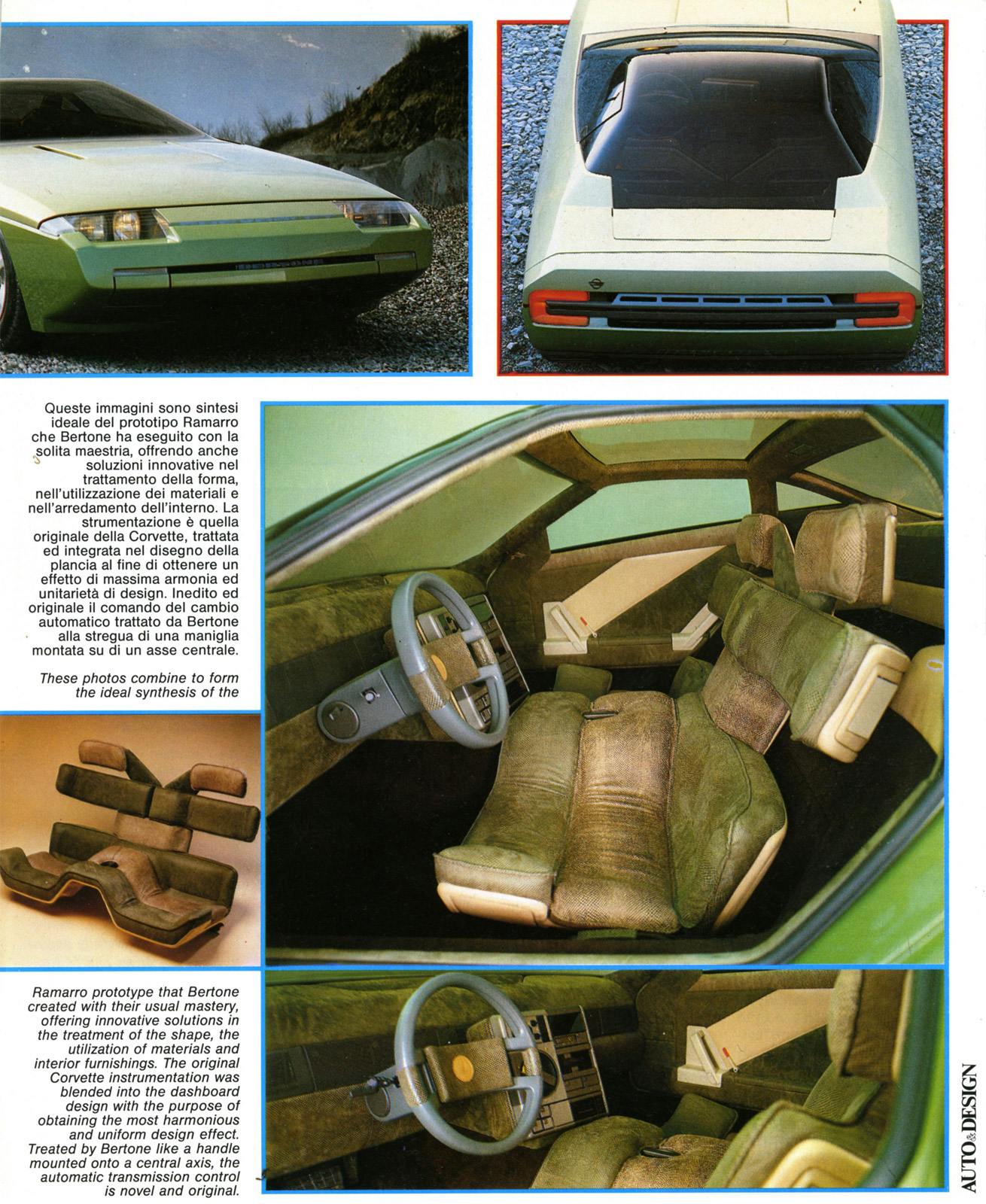
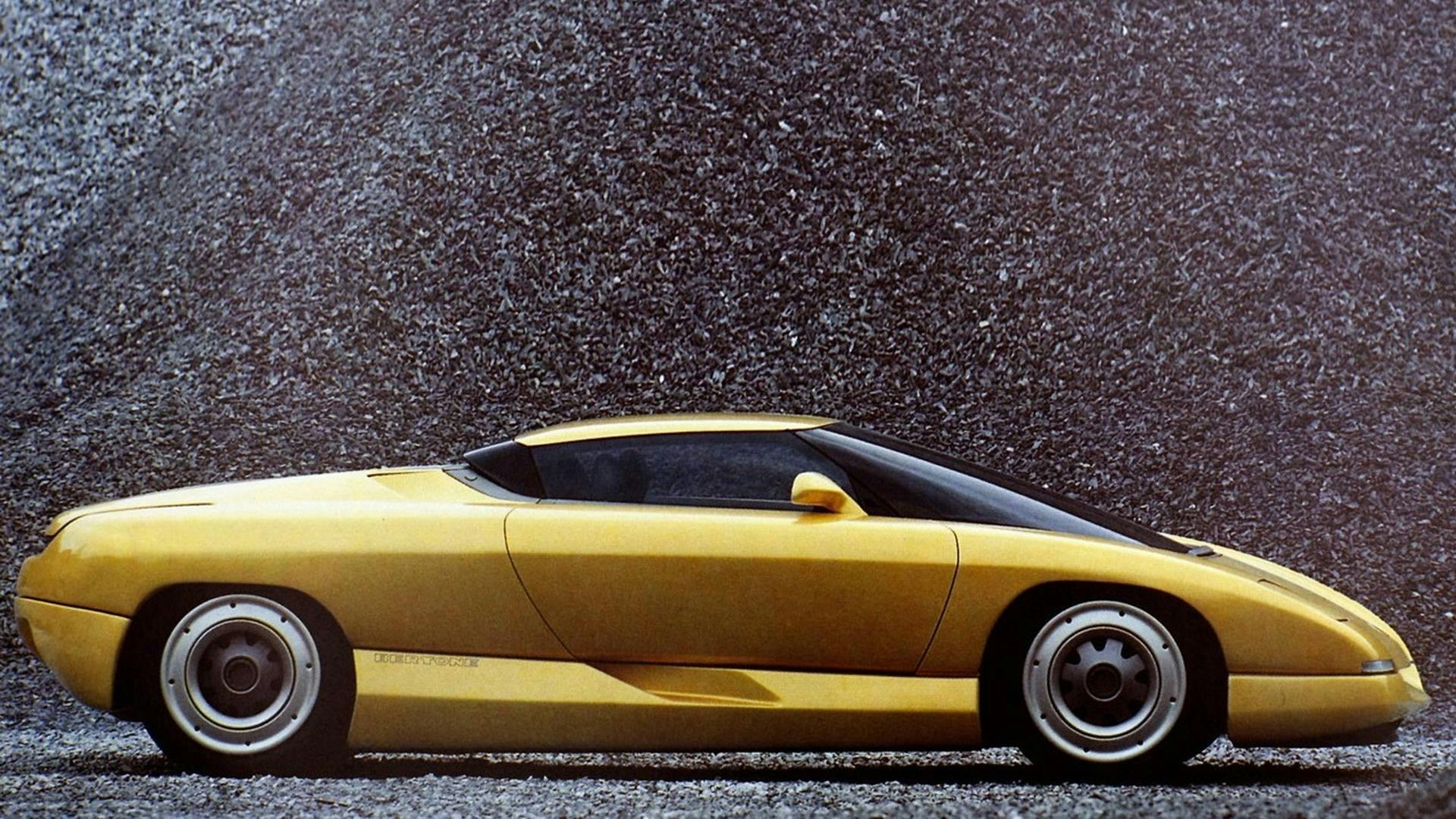
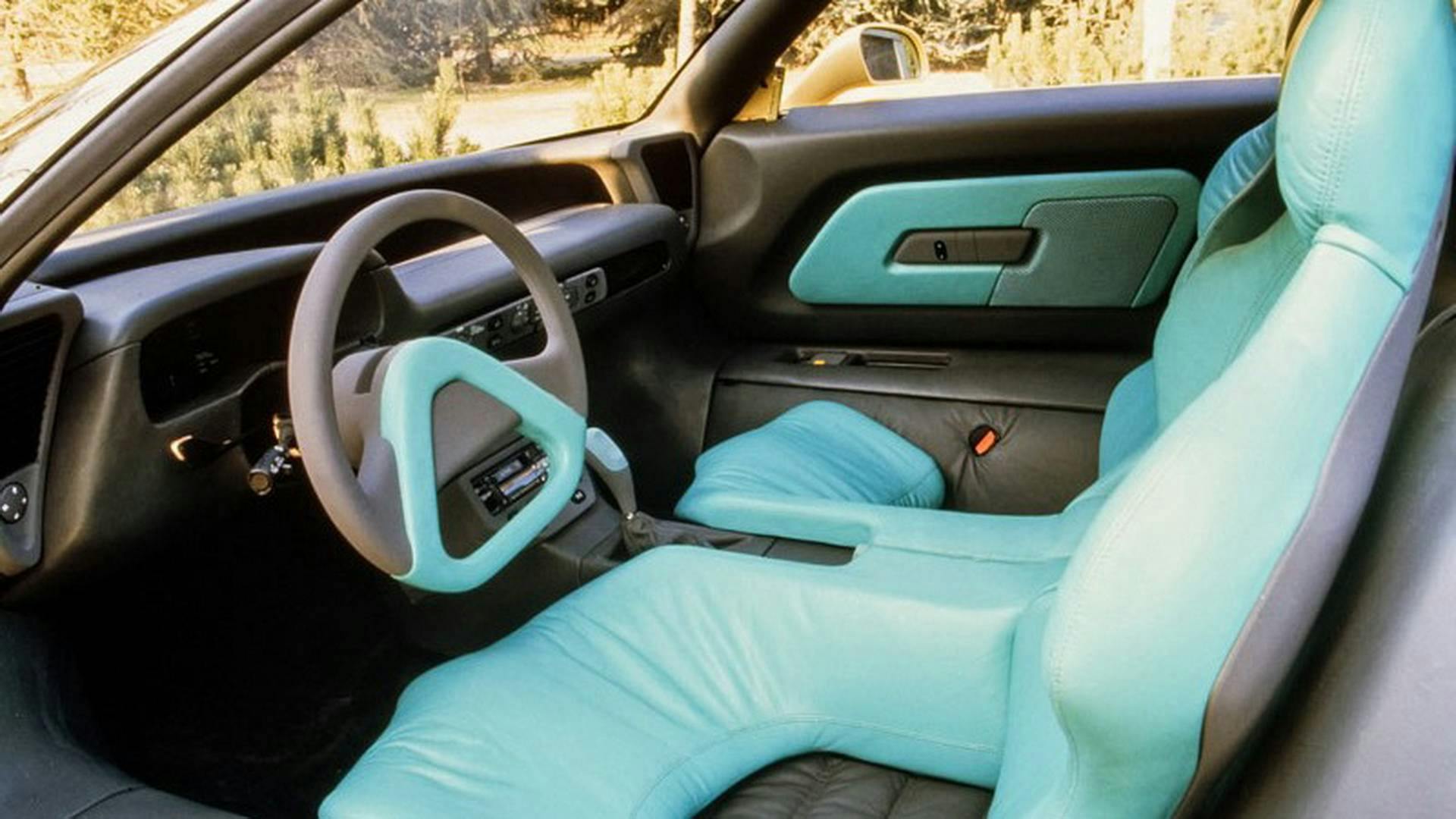
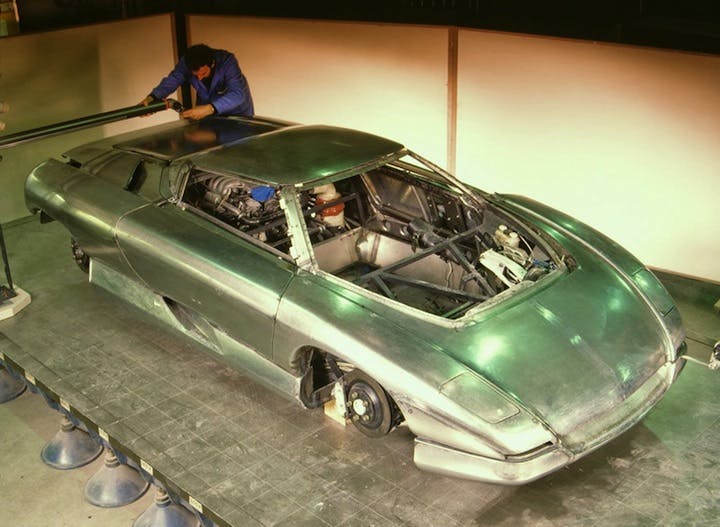


Rondine. The simplicity of feather-thin roof pillars, clean, folded lines, and just good taste…The Moray is a nice tribute, but that Rondine should have been produced en-masse. In my opinion, one of the greatest designs in existence.
I fully agree with you. It’s such an elegant, graceful shape.
It’s got my vote.
I like the front of the Rondine, but the back is not good.
I actually saw Tom Tjaarda at the auction in AZ when the Rondine crossed the line. It really is a timeless design.
I can just hear all you guys saying “You kooks say that about *everything,* but you know, there are some pretty strong Old Studebaker styling cues in there. So of course I like it.
The Moray was well done. The others did not age well.
Stick to wine, pasta, and beautiful women.
Many, if not most of the most beautiful cars in history are Italian…
My Fav is the Moray! Sleek and unadorned. Very Italian but you can see the Corvette in there. Like a Corvette and a Ferrari had a baby! Love the glass “Canopy”. Chef’s kiss!
The Mantide was definitely ahead of its time as the body work has the current flair for sharp angulation and recesses.
Nice article but it didn’t mention the Scaglietti Corvettes
I was going to say the same thing! I always like to joke, it started out like a bad joke, three Texan’s walk into Cleverley and ask for three Corvette chassis………
The Mantide!
I like all of these. Even the super weird Ramarro.
What a lot of fun it would have been if there had also been a Ramarro Camaro.
If nothing else, it would have confused poor spellers until the end of time.
The Moray , hands down for looks .
The Rondine gets my vote for being the best-looking of this lot. I can definitely see the Fiat 124 Spider in that rear.
Mantide for me. It looks fully developed.
The Moray has some nice designs, but it looks like a styling excercise.
Some wacky designs here. Not really a fan of most of these.
Apparently Hagerty is in love with the Corvette and little else! Because of this I’ve got a good mind to take my business elsewhere! The Corvette is not the ONLY sports car out there Hagerty get a grip on your sensibilities if you have any left! Corvette this and that, personally I’ve had my fill and then some!
“If you don’t have anything nice to say …” How does that rest of that saying go?
It was “come sit here by me,” for what it’s worth. Alice Roosevelt Longworth.
Hmm…spoken like a true Corvette owner, get your ego bruised? If memory serves there is something called the first Amendment? Since we are using quotations, “if you can’t stand the HEAT? You can finish that one!
“take my business elsewhere!”?
What the free vehicle articles?
The Mantide is my favorite ,with the Moray a close second.
My exact same opinion!
Of these presented the Mantide and the Moray are better, but this is one rare case where the original design by Corvette is more attractive. The Italians, who have created some of the world’s best designs, must have been having bad days when they designed these concept cars.
I agree with DrJon!